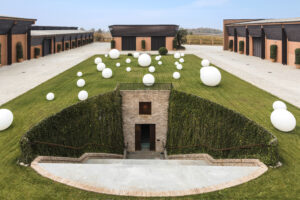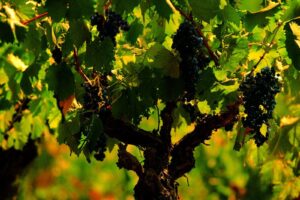If Vinexpo Paris Wine Paris grows again, as many expect, and becomes the true international wine fair, ProWein, in Dusseldorf, which has been so in recent years, and is called to redemption after a less brilliant 2023 edition than others, could become again a fair mainly for the German market (which is, in any case very important, for Italy and beyond), and as a privileged meeting point for many northern and eastern European markets. In any case, the German fair, which will open its doors from March 10 to 12, 2024, will still see Italy as the protagonist, with more than 1,190 registered exhibitors (in any case down on previous editions), the largest representative by far, followed by France (743) and Germany (708), and many countries from all over the world (from Argentina to Armenia, Bolivia to Brazil, China to India, Israel to Japan, Panama to Slovakia, the United States to Turkey, the United Kingdom to Venezuela, just to give a few examples). Then again, the numbers speak for themselves: Italian wine is the leading country in volume and value among imported wines from Germany, with the German country earning €1.1 billion for Italian wineries in the first 11 months of 2023, at +3.7% over 2022, according to Istat data analyzed by WineNews.
And it is no coincidence that, as mentioned, Italy’s wine industry is once again present en masse, albeit with more collectives and a few more defections than in the past, especially among medium-small companies. In any case, there will be no shortage of top Italian brands: from Adami to Allegrini, from Altesino to Angelini Wines & Estates, from Argentiera to Caprai, from Ettore Germano to Poliziano, from Romano dal Forno to Gini, from Farina to Umani Ronchi, from Planeta to Baglio del Cristo di Campobello, from Antinori to Banfi, from Barone Pizzini to Barone Ricasoli, from Bortolomiol to Bosca, from Bottega to Cadis, from La-Vis to Albino Armani, from Ceci to Settesoli, from Carpenè Malvolti to Carpineto, from Zonin to Casanova di Neri, from Castello di Ama to Mazzei, from Caviro to Cavit, from Cesari to Collemassari, from Cusumano to Donnafugata, from Elena Walch to Cecchi, from Famiglia Cotarella to Frescobaldi, from Ferrari to Feudi di San Gregorio, from Fontanafredda to Fantini Group, from Fontodi to Berlucchi, from Gruppo Italiano Vini (Giv) to Tenute del Leone Alato, from Leone de Castris to Lungarotti, from Masciarelli to Masi, from Michele Chiarlo to Pasqua Vigneti e Cantine, from Piccini 1882 to Pietradolce, from Pio Cesare to Quintodecimo, from Rocca delle Macie to Ruggeri, from Salcheto to Santa Margherita, from Schenk Italia to Serena Wines, from Bellavista to Tedeschi, from San Felice to Speri, from Tenuta San Guido (Sassicaia) to Tenute del Cerro, from Terre d’Oltrepò to Tommasi Family Estates, from Tua Rita to Velenosi, from Venica & Venica to Vietti, from Vignaioli del Morellino di Scansano to Villa Sandi, from Zenato to Zorzettig, passing through consortiums such as those for Brunello di Montalcino, Nobile di Montepulciano, Prosecco Doc, Bolgheri, Valpolicella, Franciacorta, Asti, Manduria, Conegliano Valdobbiadene Prosecco Docg, Lambrusco, Lugana, Morellino di Scansano, Maremma, Doc delle Venezie, Doc Roma, Vini d’Abruzzo, Soave, Vini di Romagna, Chianti, Chianti Classico, Alto Adige and again Istituto Marchigiano Tutela Vini and Piedmont Land of Wine, and from large business groupings such as Italiana Signature Wines Academy and Italia del Vino Consorzio, just to name a few among many possible names.
In the spotlight will be the big trends of a less than glittering market, as already revealed by, among other things, the “Prowein Business Report 2023”, climate change, Piwi vines (which, in Germany, are born), generational change, the increasing presence of technology and artificial intelligence in the world of wine, and so on. And, of course, wine, with many masterclasses dedicated to Italian wine, often directed by the Ice Agency, but also by German magazines (Weinwirtschaft, Vinum, Der Feinschmecker, Falstaff ... ), with the focus on denominations and territories such as Chianti Classico, Friuli Venezia Giulia, Garda Doc, Franciacorta, Custoza, Valpolicella, Lugana, Doc Venezia, Chianti, Puglia, Morellino di Scansano, Oltrepò Pavese, Asolo Prosecco, Vino Nobile di Montepulciano, Prosecco, Valtenesi, Campania, Montefalco, Vesuvio, Lambrusco and Vini Mantovani, Pinot Grigio delle Venezie and more.
Representations of Italian wine that, therefore, from Prowein 2024, is looking, with particular attention, at the German market which, as the statistical report of “DeutscherWein.de”, relating in truth to 2022, tells us, has not passed unscathed the scrutiny of the difficult economic conditions that all countries in the world have gone through in recent years. In particular, the report points out, in a historically price-sensitive market like Germany, imported wines, which move through distribution at an average price of 3.6 euros per liter, saw a -7% drop in volume and -5% in value, while domestic wines (in 2022, Germany produced 9 million hectoliters of wine, compared to an import of more than 13 million hectoliters, ed.), which cost more, or, on average, 4.18 euros per liter, suffered volume losses of -14%, and value sales declines of -8%. As a result, the market share of German wines, in terms of volume of wine purchased, fell by one percentage point to 44%.
Looking at the numbers in more detail, Germany imported 6.02 million hectoliters of still white wine in 2022 (-8.9% over 2021), mostly generic or entry level, for €721 million (+1.4%), with a price of €120 per hectoliter, while still reds stopped at 5.8 million hectoliters (-5.5%) for €1.29 billion (-7.8%) at an average price of €220 per hectoliter. Sparkling wines as a whole moved imports of 677,000 hectoliters (-6.6%) for 471 million euros (+5.7%), with half of the value represented by Champagne, which made 242 million euros (+13.7%) with 95,000 hectoliters (+2.3%) at an average price of 2. 555 euros per hectolitre, while other imported sparkling wines put together 156 million euros (+9.1%) for 426,000 hectoliters (-3.5%) and an average price of 366 euros per hectolitre (the rest being sparkling wines). For a total import of all types of wine, therefore, of 13.3 million hectoliters (-6.8) for 2.6 billion euros (-2%).
Italy has steadily, for years, been the leader among important wines. Having said the growth in 2023 (waiting, in a few days, for the final Istat data), in 2022, wines worth 1.02 billion euros (-6.4% on 2021) and 4.8 million hectoliters (-7%) arrived from Italy, with an average price of 201 euros per hectoliter. With Italy ahead of France (€882 million, stable on 2021, for 1.7 million hectoliters, at -15.3% as, but with an average price of €462 per hectoliter), and Spain (3.6 million hectoliters, -6.4%, for €348 million, +1.9%, and a price of €95 per hectoliter). Looking at Germans’ wine buying and drinking behavior, wine holds a share of the alcoholic beverages market in Germany around 21.9% for still wines, joined by 9.9% for sparkling wines, with beer dominating with 36%, and spirits at 29% of the spirits market share, while other alcoholic beverages are worth 4.3%. Wine consumption, in 2022, stood at 19.9 liters per capita, for the first time below 20 liters per head since 2015 (the peak being 21.1 liters in 2016), while beer is at 120.1 liters per capita per year (again below the average since 2015, when consumption was as high as 132.5 liters per head). Looking at consumption trends, when looking at overall wine consumption the propensity to buy German wines is steadily around 44-45% in volume and 47% in value between 2019 and 2022, with Italy the second favorite country with 17-18% in both volume and value. The breakdown by type is curious: when they turn to domestic wine, Germans more than 58% of the time consume white wine, then red (30.3%) and finally rosé (11.1%), while among foreign wines, reds (46.9%) are more popular than whites (40.5%), with rosé in the rear (12.6%). Among wine sales channels, discount stores (38%) and supermarkets (28%) make up the bulk of the total, while the third channel preferred by consumers (with 9%) is direct sales at wineries. The rest is divided, more or less equally, between specialty stores and wine stores, physical and online.
Numbers and trends to take into account, in order to understand how the German market moves, how it changes and how it evolves, which, after the North American market (and of course the “domestic” one), is the most important one for the wineries of Italy.
Copyright © 2000/2025
Contatti: info@winenews.it
Seguici anche su Twitter: @WineNewsIt
Seguici anche su Facebook: @winenewsit
Questo articolo è tratto dall'archivio di WineNews - Tutti i diritti riservati - Copyright © 2000/2025








































































































































































































